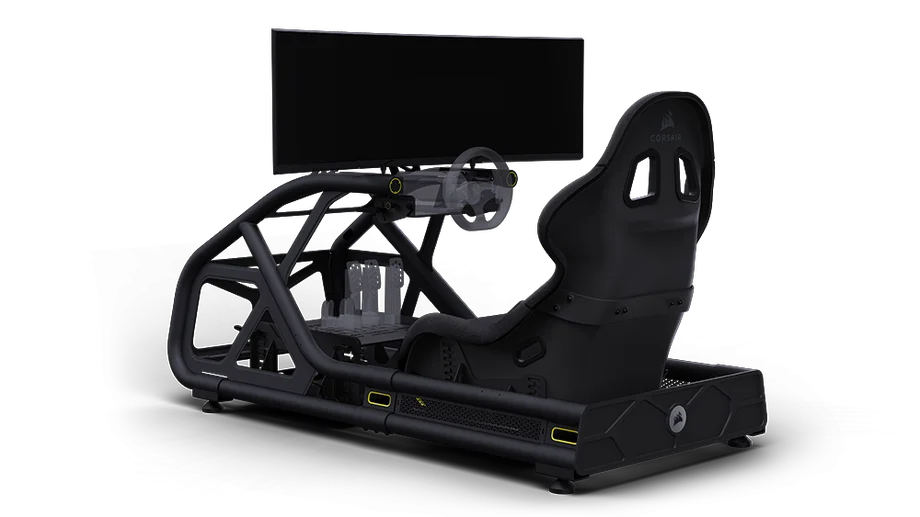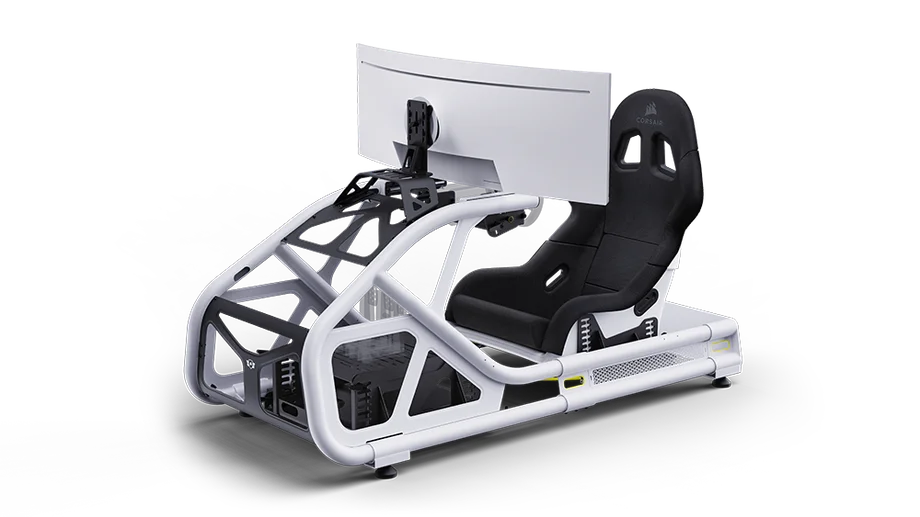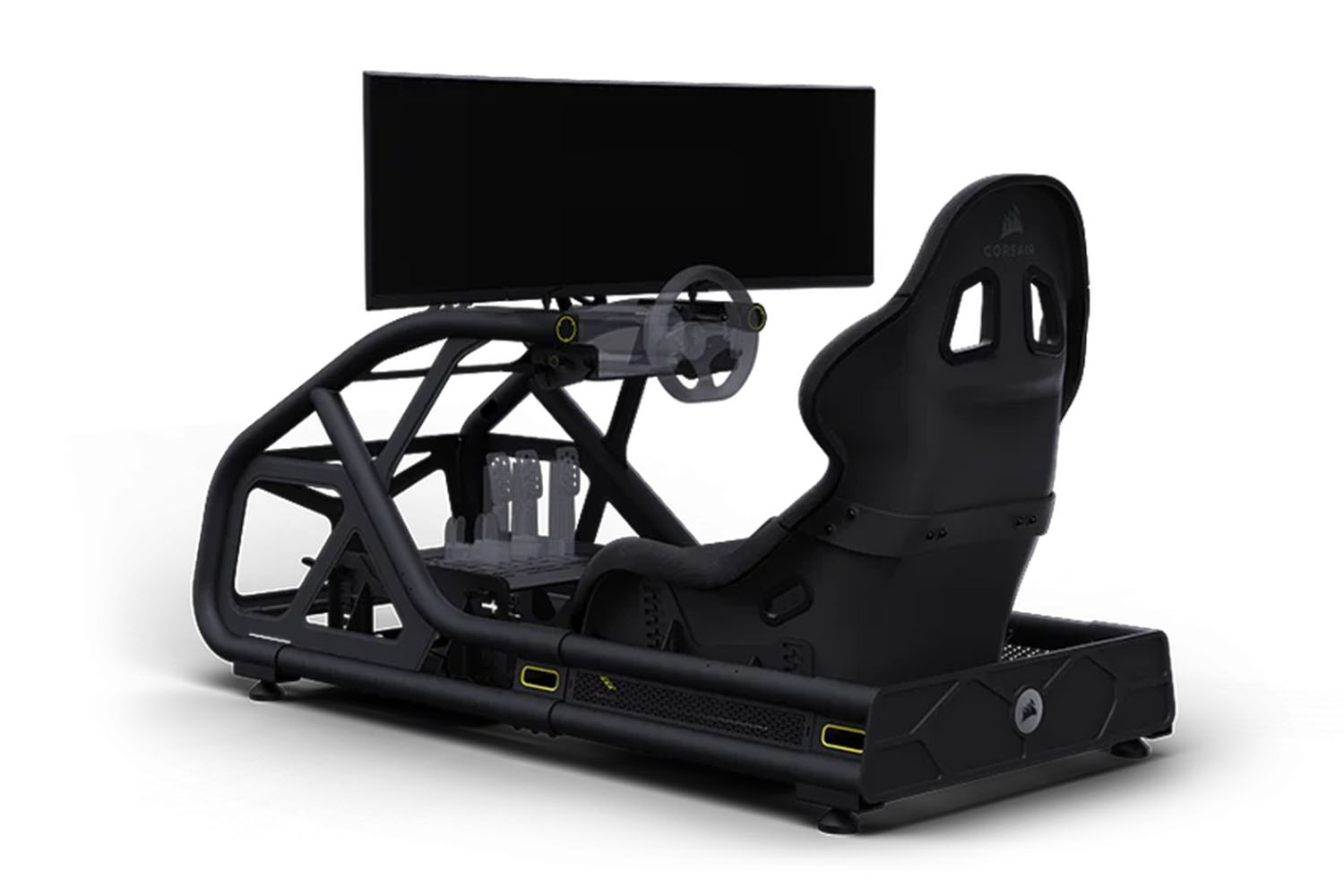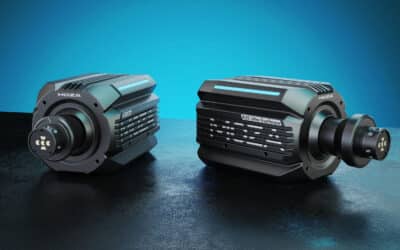It’s not too surprising that gaming brand Corsair has ventured into sim-racing. This discipline has really taken off in recent years, and it seems that everyone is getting into it.
Some time ago, we heard that Corsair would be offering a whole range of sim-racing peripherals. Obviously, for such a giant of the gaming industry (with over 30 years’ experience in the game, by the way), starting from scratch isn’t really an option, and for several reasons. The best way is to partner with a brand that is active in the sim-racing industry, to benefit from its know-how and, above all, its technologies. Asetek SimSport has done this with Simucube, and it’s worked out pretty well, I must say.
Corsair has taken a slightly different approach, going all out to buy Endor AG, the company behind Fanatec . Don’t panic, because the deal isn’t finalized yet, but it’s close. Corsair could therefore benefit from Fanatec’s sim-racing expertise for its own products, and vice versa when it comes to gaming hardware experience.
Anyway, that’s not what today’s topic is about. Given that we got wind that Corsair was going to get into sim-racing, what better way than Computex to unveil prototypes, right? Well, we’ve been half-served, I must say. Honestly, I was expecting to see prototypes of bases, pedals or even steering wheels, but Corsair showed its public the brand’s first cockpit: the Sim Rig.
I don’t know about you, but I think the approach is atypical. But it’s understandable on the other hand too. Until the Fanatec takeover is finalized, the best thing to do – and this remains my opinion – is to offer a chassis that will be able to accommodate the many sim-racing peripherals available on the market, and in time, also host Corsair products.
What is the Corsair Sim Rig?


Corsair’s chassis is still at the prototype stage, but at a rather advanced stage from what I’ve seen, and also because the brand showed it to the general public at Computex 2024. The structure is tubular, with what appears to be steel, a guarantee of rigidity for setups.
Design-wise, it’s minimalist, and I love it. Black dominates the cockpit (with a possible white version), with a few fluorescent yellow accents on certain elements. But don’t worry, it goes unnoticed.
The base support is a plate that will accommodate virtually any peripheral available on the market, but the emphasis is on Fanatec products. I say it’s a nod to the future buyout. The plate can be used to adjust the height and depth of the base without tools, thanks to rails. The same goes for the pedals, by the way.
For the seat, Corsair has come up with a very handsome, and also minimalist, bucket. It’s all black, with the brand logo on the back and reinforcements on the sides. This seat is mounted on slides, so it can be adapted to any rider. What’s more, the driving position is hybrid: you have the rather standard GT position for the segment, and you also have the F1 position. Other cockpit manufacturers offer this on some of their products, and it’s to appeal to as many racers as possible, as it’s not uncommon to see a gamer who loves F1 and GT.
On the right-hand side, we have a support for a gear lever and/or handbrake, which is superbly well positioned. Very close to you, you’ll be able to shift gears or lock your rear wheels with unrivalled ease.
Another point worth mentioning is rigidity. The Corsair Sim Rig is capable of supporting ultra-wide curved screens without the slightest problem, thanks to a bracket that bolts directly onto the chassis structure. The implementation of this support is really nice, and by far the best I’ve seen on any cockpit on the market. It’s clean and stylish, and the rear structure supporting the screen is almost invisible. And you can also have a tripe screen setup with side reinforcements.
Other accessories are also available for the Sim Rig. We’ll just have to wait a little longer for further information, including a release date. Don’t worry, the Sim Rig is scheduled for 2024.








0 Comments